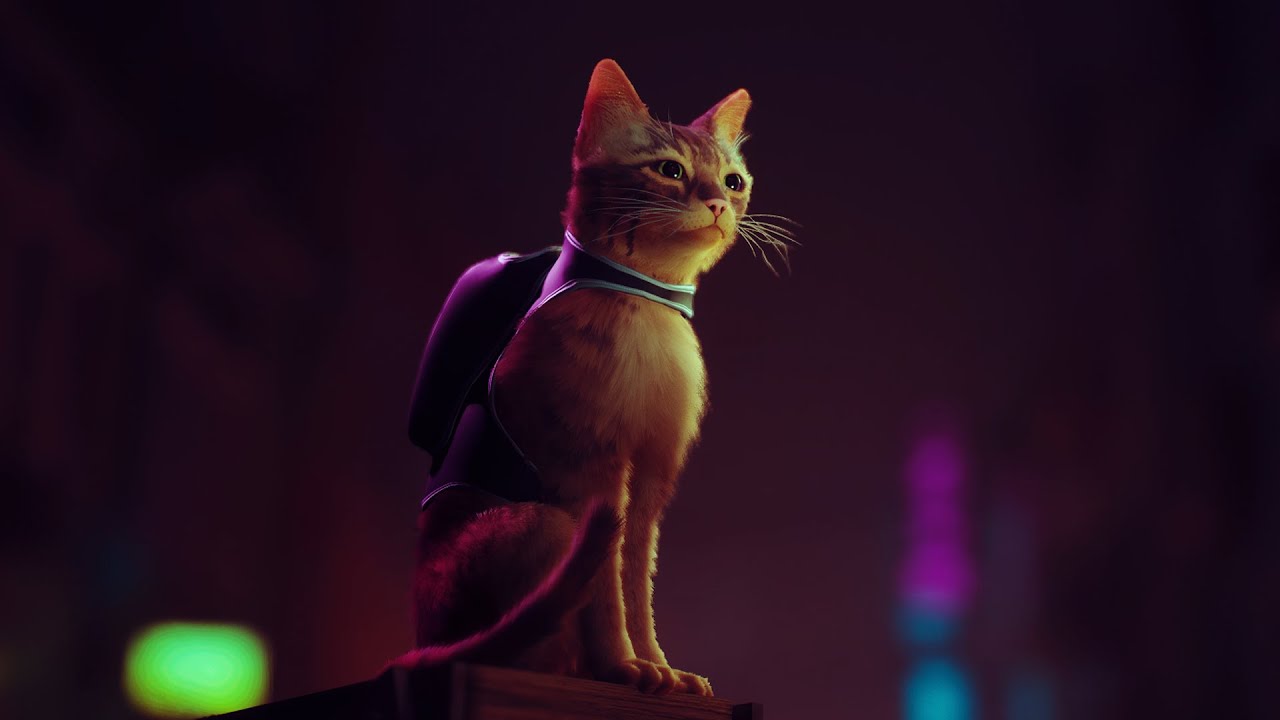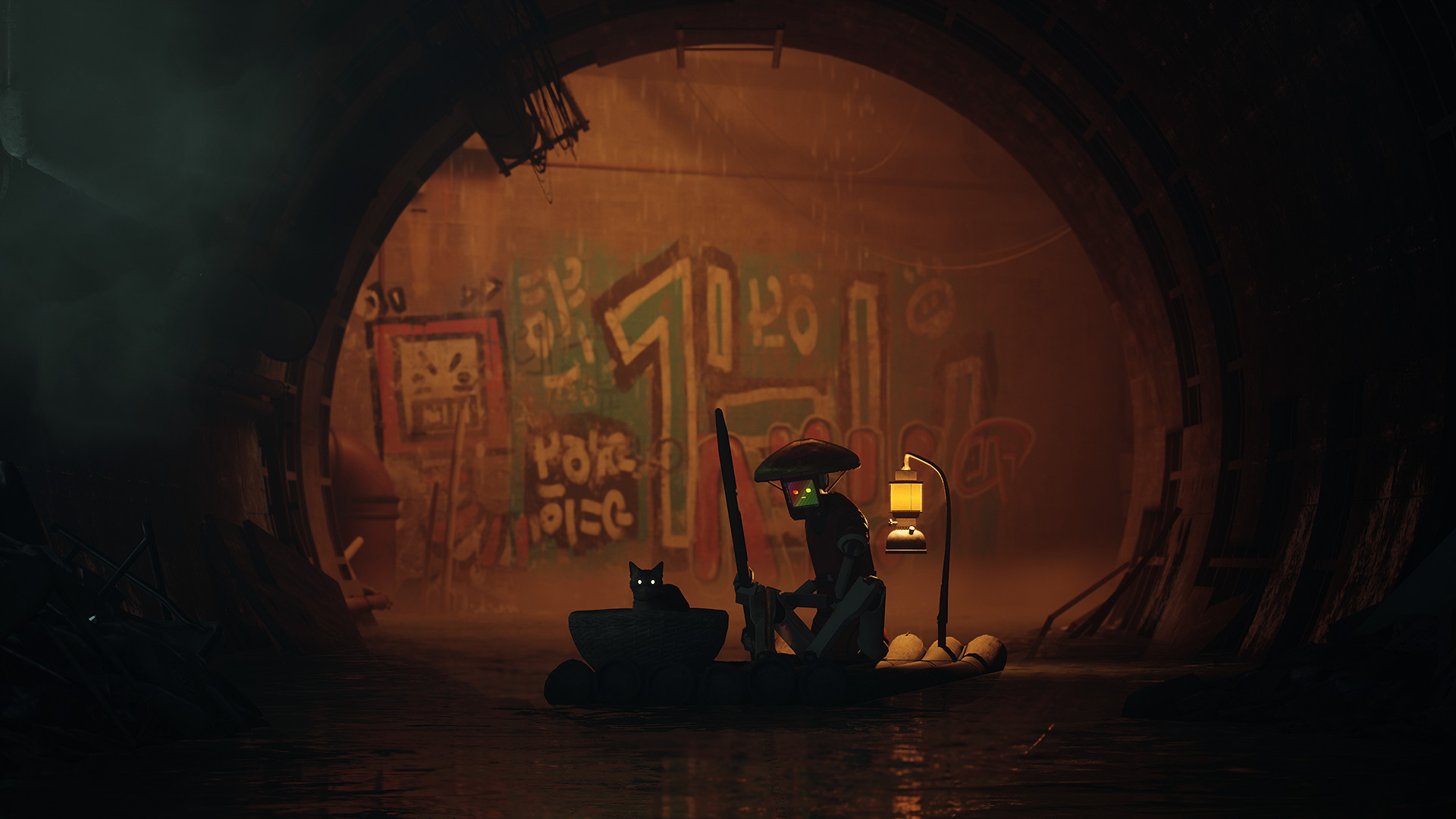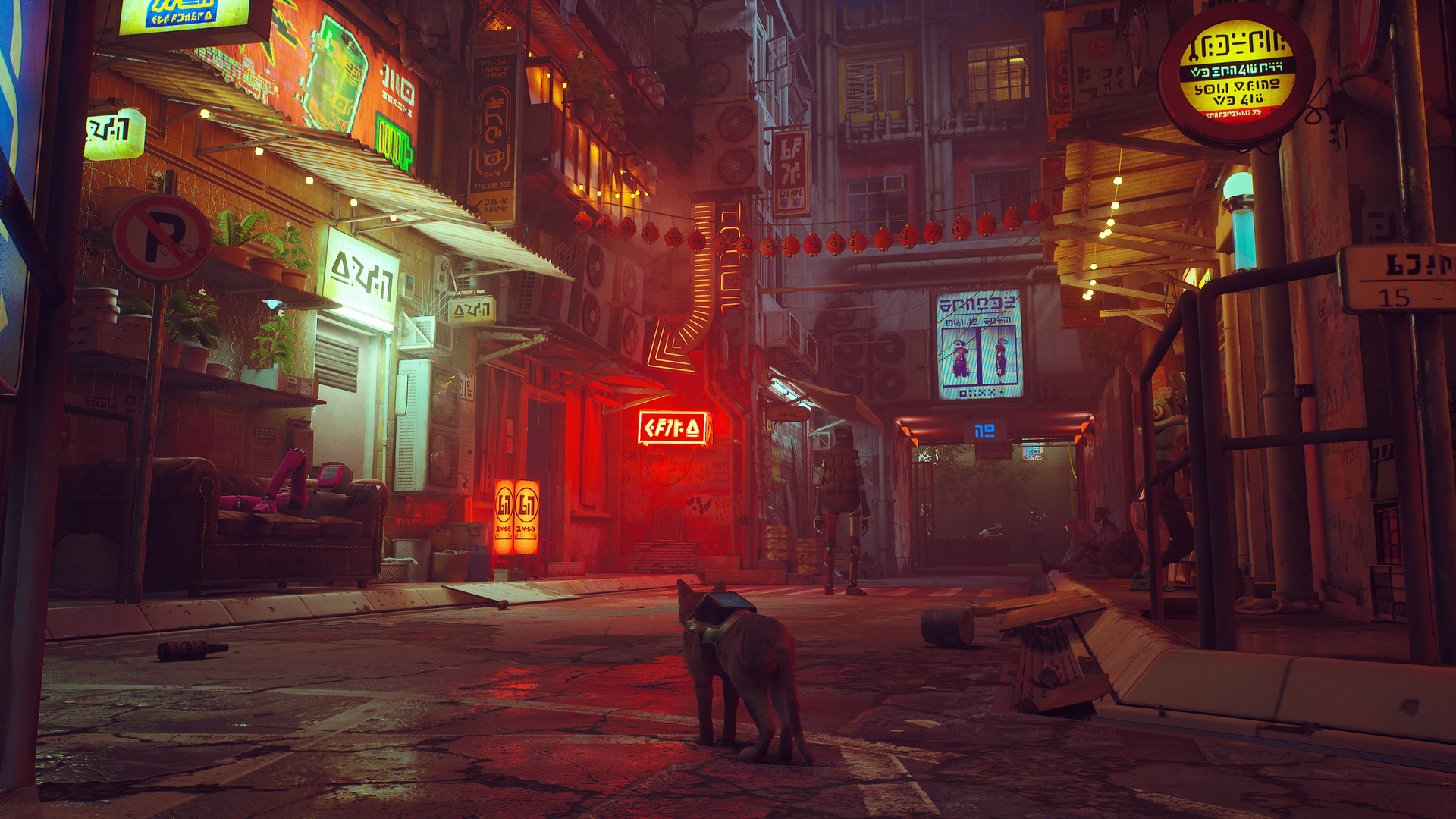I wasn’t sure what to expect going into Stray from Blue Twelve Studio and Annapurna Interactive. I figured it would at least be a walking simulator where you control a cat. However, Stray is much more than that. It has a touching narrative about hope, wrapped in themes of capitalistic greed.
Stray follows a cat who literally falls its into a city filled with robots. As the cat tries to find its way home, it learns about the robots’ desires to go to the Outside, a mysterious area past the domed city that has been closed off for tens, if not hundreds, of years. Along the way, the cat meets a drone named B12 that helps it translate the robots’ language and defend it against enemies.
Stray Review: Being a Cat is as Smooth as Ever
Throughout the game, they’ll learn more about themselves and the previous civilization that inhabited the city. Stray’s narrative is incredibly heartfelt and through the trials and tribulations they both face, they grow closer as a pair.
The enemies in Stray are called Zurks, and they’ve evolved to eat metal but will still devour the cat if they manage to get a hold. The way Stray implements combat encounters is impressive, as well. While the cat can’t fight, B12 can protect it by shining a purple light that eviscerates the Zurks. Not only is this mechanic creative, but it also shows the bond between B12 and the cat that adds another layer of depth to their companionship.
Stray also feels very smooth to play. The platforming sections and controls for the cat are precise and impactful. Every time the cat jumps, you feel the proper weight of the jump and subsequent landing. Whenever the cat runs, you feel the rush, whether it’s to escape enemies pursuing you or to just casually stroll through the city.
The puzzles in Stray are intuitive and fun to solve; they’re not particularly challenging but not insultingly easy either. The game does a great job of teaching you how to use different objects in the environment. For example, whenever you see an empty horizontal barrel, that’s usually a cue that you need to roll it somewhere, get on top, and reach higher ground.
Many locations in Stray are filled with life, despite having no humans around. The different robots have developed anthropomorphic qualities as they try to imitate the previous civilization by learning through the items left behind. The graphics look great as well, and the art direction is colorful.
What’s also appreciated is that the game uses custom typography and language instead of generic Asian letters and symbols for the neon signs scattered throughout the cities. By doing so, Stray manages to nail the cyberpunk aesthetic while also avoiding orientalism and racial stereotypes.
I played Stray on both a laptop and Steam Deck. It runs great on Steam Deck — most of the time. However, the framerate occasionally chugs and comes to a crawl for seemingly no reason. Stray drains the Steam Deck’s battery pretty quickly, too.
Stray only features an autosave function (no manual saves here), and there were instances where I’d have to start over from the most recent checkpoint after stepping away from the game. It was annoying to lose about 5 minutes of game time when a manual save option could have been implemented to avoid such situations.
Stray Review — The Bottom Line
Pros
- Touching story between the cat and B12.
- Controls feel great.
- Beautiful to look at.
Cons
- Performance issues on Steam Deck.
- No manual save option.
Stray takes about five to six hours to finish, but it makes use of that short run time to tell a touching story between a cat and a robot drone. Its controls feel great and impactful, whether you’re jumping or running. There’s so much personality to the cat, too: being able to meow on command and do cat things like knocking over items and scratching on walls is a nice touch.
Stray is a tightly focused journey that is worth experiencing at least once.
[Note: Annapurna Interactive provided the copy of Stray used for this review.]









Published: Jul 14, 2022 10:41 pm